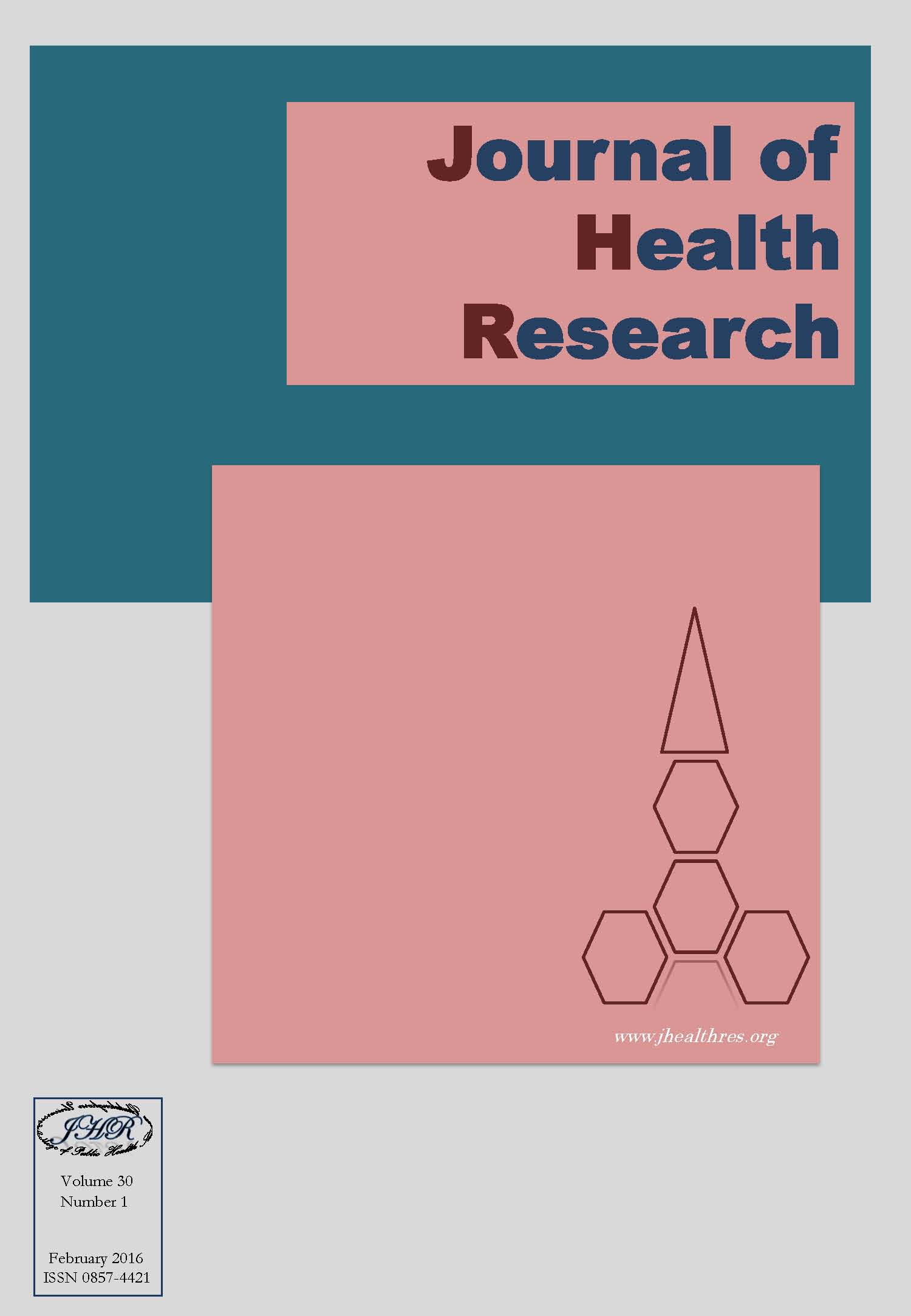Upper Extremity Pain Evaluation with Thai Version of QuickDASH and Numeric Pain Scale in Office Workers
Keywords:
QuickDASH, Numeric pain scale, Parallel test, Office workersAbstract
Background: Musculoskeletal pain in office workers is often localized in the shoulder area. Disturbed functions and quality of activities in normal living are consequences of such pain. Early screening to identify such pain and its effects can help promote efficient health-care.
Methods: The objective of this study was to evaluate the disability of upper extremity in office workers with pain and non-pain in their dominance upper extremity. In the Thai version of QuickDASH, Numeric pain scale with body chart for rating pain intensity and confirming pain area were used as screening tool and were conducted in parallel.
Results: One hundred and thirty six completed questionnaires were collected from 28 males and 108 females. Ages were between 20-58 years with mean (SD) of 34.5(7.7) years. Substantial positive correlation between pain intensity and disability from Thai version of QuickDASH questionnaire was observed. The average QuickDASH score (95%CI) was 25.2 (22.5-28.0) from 109 participants with pain and was 4.8 (2.9-6.7) from 28 participants with non-pain in upper extremity. Screening cutoff point between groups was defined at or above 11.4 QuickDASH score with 87.16% sensitivity and 89.29% specificity.
Conclusion: Thai version of QuickDASH and Numeric pain scale with body chart for rating pain intensity are appropriate screening tools. Depending upon feasibility of use, this screening tool can clarify disability from pain in upper extremity.







